Rules of the Road
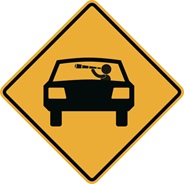
The Cambridge Street Code
Our city looks a lot different than it did five years ago. The City of Cambridge has installed several new miles of protected bike lines, new dedicated bus lanes and stops, and other infrastructure to help all people move more safely in our city. The Cambridge Street Code addresses these new changes and helps educate all users of the road about rules, etiquette, and how to get around town safely.
Rules of the Road for People Driving

There are many pedestrians in Cambridge. When driving or bicycling, please note the following:
- Yield to pedestrians entering or using a crosswalk in your path of travel.
- Pedestrians always have the right of way in all crosswalks. If a pedestrian is at a crosswalk, you must stop to allow them to cross.
- Almost all signals operate "concurrently" meaning that pedestrians are permitted to cross in the same direction that cars are allowed to travel. You must yield to them on turns.
- When stopping at a red light or stop sign, people driving and biking must stop at the stop bar and not block the crosswalk. Do not let your vehicle block a crosswalk.
- Never pass another vehicle that has stopped or is slowing down for a pedestrian.
- Do not text and drive. It is illegal and dangerous.
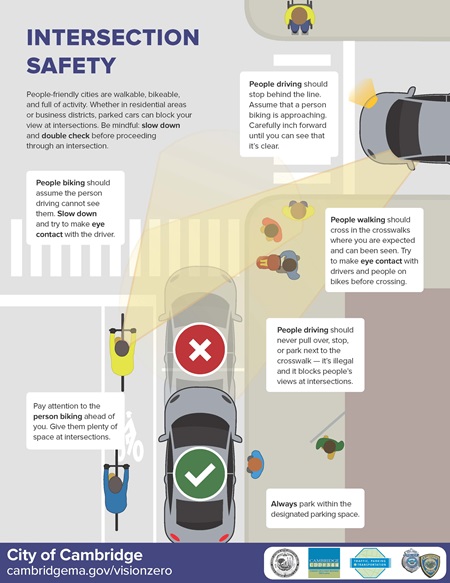
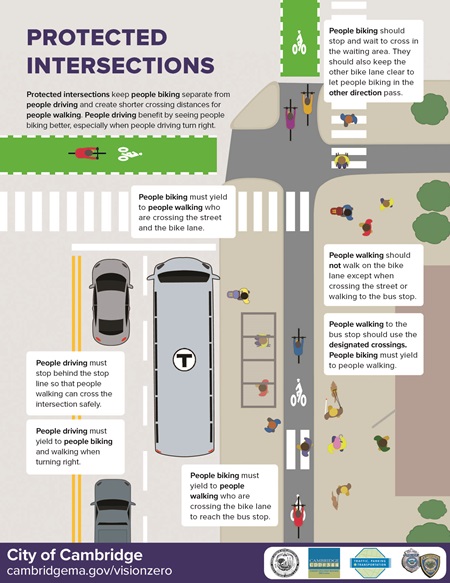
There are also many bicyclists in Cambridge.
Click here learn how to coexist with people biking on our roads, and why it's important.
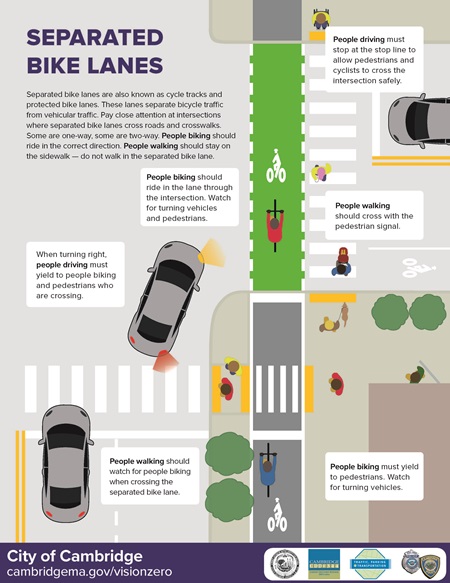
There are a few important practices to keep in mind when driving as you watch for bikes:
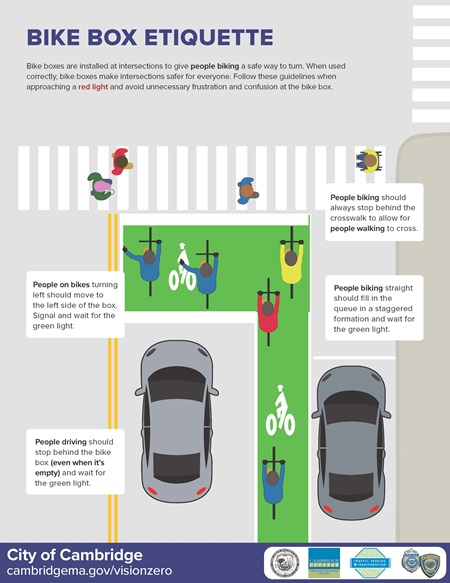
-
Parking regulations specific to the City of Cambridge
-
Permit parking regulations
-
Parking tickets
-
Traffic signals, including leading pedestrian and bike lights
-
Truck routes and restrictions
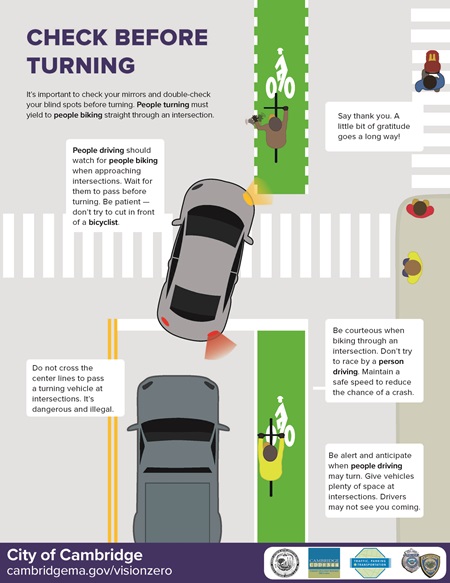
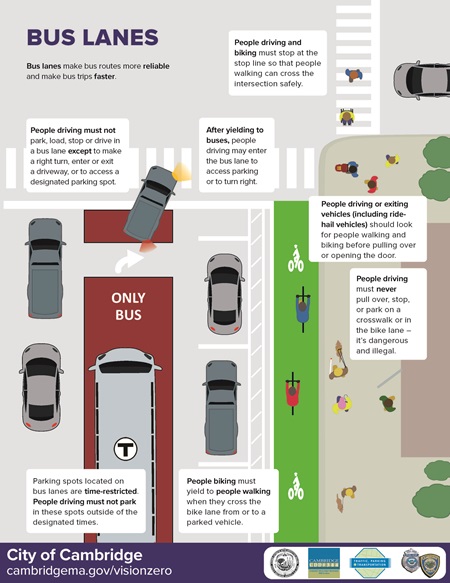
Rules of the Road for People Biking
Rules of the Road
-
Ride with traffic, not against it.
-
Obey all traffic signs and signals. When you are on the street, you are a vehicle and must follow the same traffic rules as people driving. This means that you must stop at stop signs and stop lights.
-
Never pass a bus on the right. You could collide with a pedestrian or get squeezed against the curb.
-
Do not ride on the sidewalk in business districts. It is legal to ride on the sidewalk outside of business districts, but you must yield to pedestrians and ride at the speed of the people walking around you.
-
Always yield to pedestrians in the crosswalk.
-
Never pass another vehicle that has stopped or is slowing down for a pedestrian.
-
The law requires using a white light in front that is visible for at least 500 feet, pedal reflectors, and a rear red reflector and/or rear red light that is visible for at least 600 feet after dark.
Other Helpful Tips
-
Be predictable. Do not weave in and out of traffic or parked cars.
-
Be especially alert when going straight through an intersection -- look for motorists in all directions and merge behind a right-turning motorist when possible.
-
Signal your intentions - use hand signals to indicate turns and stops.
-
Left turns: There are two possibilities: Signal, move into the left lane, and turn left. OR Ride straight to the far side of the intersection, then stop, turn left, wait for the light to turn green, and ride across. If you use the crosswalk, walk your bicycle across. A mirror is helpful, enabling you to be aware of traffic approaching from behind. Make eye contact with people driving and communicate your intent to turn.
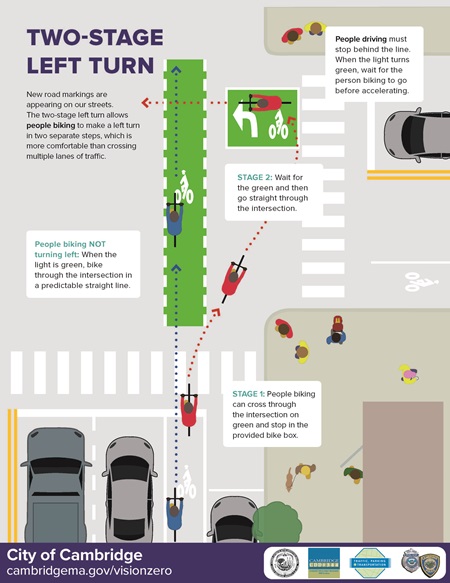
Look Out for Car Doors
-
Ride at least three feet from parked cars.
-
Never swerve between parked cars; use the outside of the next car as your guide.
-
Avoid riding on the right side of any stopped car, especially if it is near the curb. View a printable flyer.
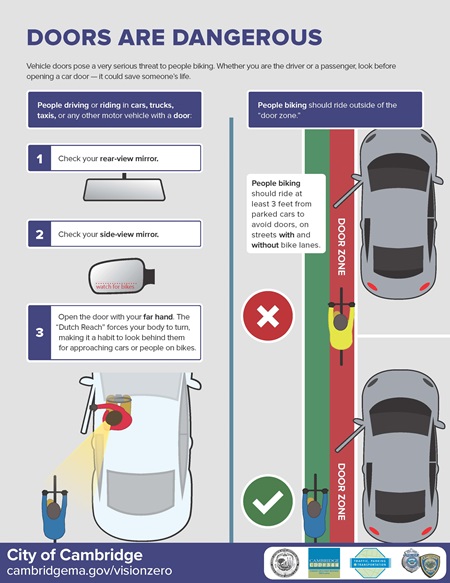
Watch For Bike Lane Obstructions
-
Watch for motorists crossing bicycle lanes to turn or park.
-
If there is an obstacle in the bicycle lane, slow down, signal, and make sure you have a clear space or the attention of the driver behind you before you move left into the general travel lane.
-
If you encounter an illegally parked car, you may call the Traffic, Parking & Transportation Department (617-349-4700) or the Police Department (617-349-3300) to report it. Details such as the license plate number and exact location by street address will help enforcement officers. View a printable flyer.
Be Bright, Use a Light
-
The law requires using a white light in front that is visible for at least 500 feet, pedal reflectors, and a rear red reflector and/or rear red light that is visible for at least 600 feet. The more illuminated you are, the better. Supplementary visibility measures such as blinking lights, reflective straps and reflective tires are particularly helpful.
-
Remember that motorists and pedestrians need to see you. Many cyclists believe that lights in the city are not necessary, as the streets are relatively well lit. The point is not so much what you as a rider see; it is that you are seen by others.
-
Nearly half of all cycling deaths in the US involve cyclists riding at night without lights, although only 3% of biking is done after dark. Link to printable flyer.
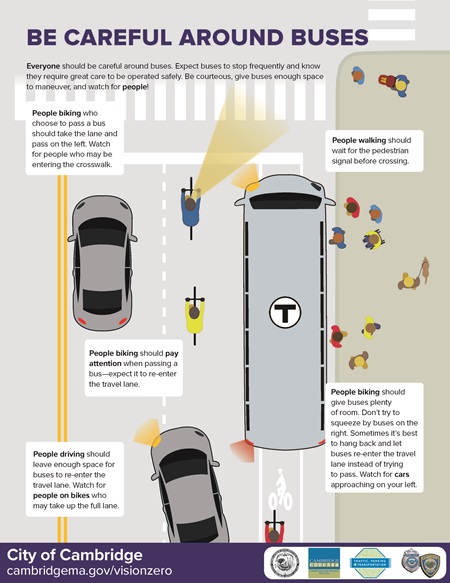
Rules of the Road for People Walking
Laws for pedestrians include:
-
Obey the orange "don't walk" and white "walk" signals.
-
Use a crosswalk if one is available.
-
At crosswalks with pedestrian signals, if there is a push button, use it and wait for the WALK signal. Signalized intersections without a push button will give you a WALK signal automatically.
Other Useful Tips for Walking in Cambridge
- Look up from your cell phones when crossing the street. Pay attention when entering the roadway, as others may not be looking out for you.
- Watch out for large turning vehicles. Their footprint is often wider than you would think.
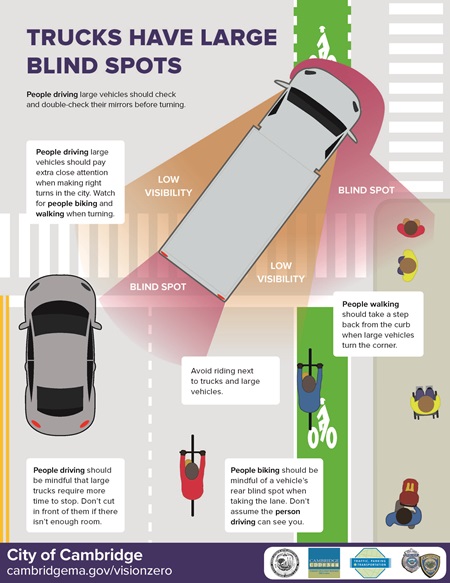
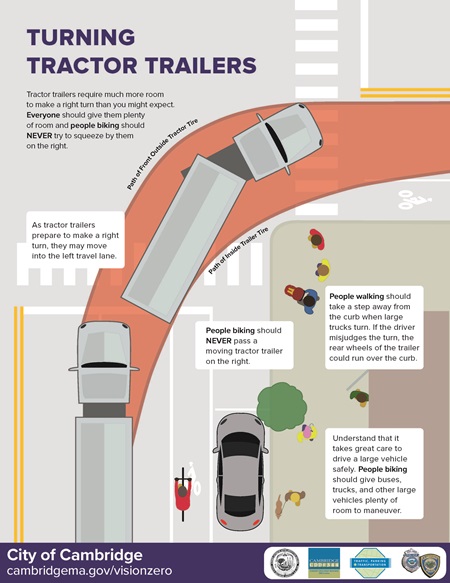
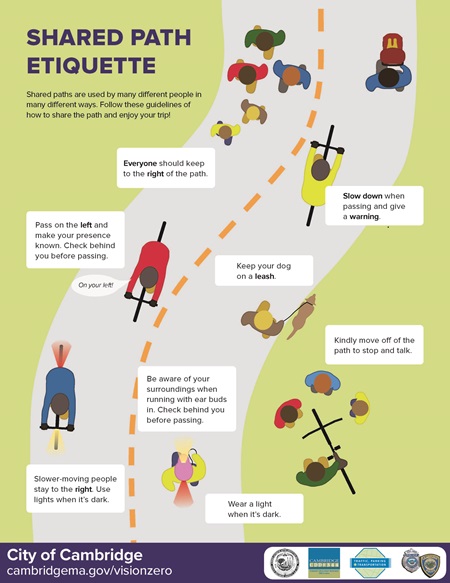
The Community Development Department has many resources available about walking in Cambridge.
For more information
For more information on the rules of the road in Massachusetts, please look to the Massachusetts Registry of Motor Vehicles website.
To speak with a person at the City of Cambridge, please contact Miguel Perez Luna, mperezluna@cambridgema.gov, 617-349-4671.